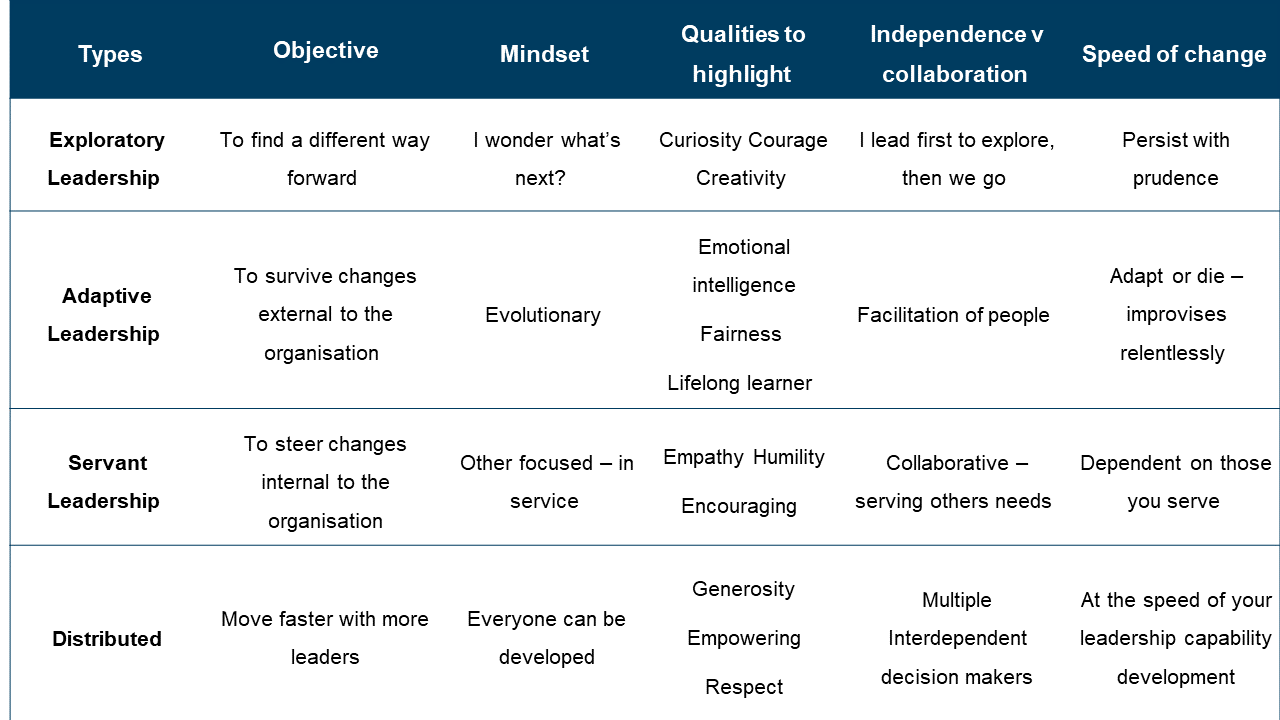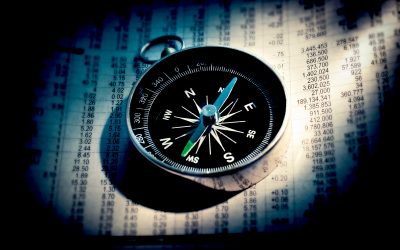Have you heard of Exploratory Leadership? In our Certificate of Agile Change Leadership program, we have three leadership lessons that look at the three most common styles of leadership when leading transformation and change. These are Adaptive Leadership, Servant Leadership and Distributed Leadership.
We know think there’s a fourth style that is emerging that is worth considering: Exploratory Leadership. The reason for this is the last two years of leading through a pandemic has meant an accelerated and exponential level of uncertainty in what we do. How often have we heard the word “unprecedented”?
It’s meant that as leaders we have needed to step into unknown circumstances and navigate novelty as a way of doing business. And while this is unprecedented for most leaders today, there’s a group of people who are very used to this exact circumstance: the explorers.
We think that now, more than ever, we need explorers in our leadership cohorts. And it will be interesting to see where they take us.
How does exploratory leadership differ from adaptive, servant, or distributed leadership?
This is a question that co-founder of the Agile Change Leadership Institute, Dr Jen Frahm explored in 2020 with Jillian Reilly, founder of Antacara Frontiers. We think you can differentiate the four styles of change leadership by:
- Objectives of your agile transformation leadership approach
- Underpinning mindset of your agile transformation leadership approach
- Qualities to highlight in leading agile transformation
- The sequencing of when to go alone, and when to go together
- The speed of change you wish to lead.

For us, the difference between exploratory leadership and the other styles is the willingness to accept that the future is both unknown and full of possibility. An explorer takes a sanguine view that deep uncertainty carries with it boundless possibility … if someone is willing to do the frontier work. Rather than regarding future change as a threat to be managed – which brings with it the uncomfortable neurobiology of ‘fight, flight or freeze’ – the Explorer treats change as an opportunity to ‘learn, adapt and create.’
For the exploratory leader, maps that sketch out the business terrain are as, if not more, important than plans detailing future actions. In this way, the skillsets and approaches of an exploratory leader are different to those who believe they are shepherding towards a largely defined future.
Navigational skills come to the fore: reading the contours of the business landscape, recognizing landmarks, and being able to zoom into immediate details and zoom out to the horizon. By necessity, explorers’ toggle between presence and foresight – what’s beneath their feet and what they cannot see.
Explorers know it’s not a race.
In contrast to the high-velocity changes of many of our contemporary leadership models, exploratory leaders persist in the face of discomfort and even failure. They tap into embodied wisdom and compare that to the available objective data. They persevere rather than pivot. They understand that curation and creation are more valuable than control.
“Go further than you would, no further than you should”
Daryl Conner (Leading at the Edge of Chaos and Managing at the Speed of Change).
The notion of persisting with prudence is an important one – exploratory leaders are really good at-risk mitigation and establishing boundaries. They balance independence with collaboration. Explorers rely heavily on experts and supporters to establish psychological and organisational safety boundaries. There’s no climbing rock faces without harnesses. No treks without water and compasses.
Think more intrepid than rogue.
Signs you’re an exploratory leader
Somatic wisdom
You have invested time in understanding the mind-body connections and are attuned to your physical state and the feedback it provides you – breathing, tension. Explorers have an “inner compass” that guides them beyond boundaries, through risk and towards their frontiers. You know where you hold tension, where you hold excitement, how you calm yourself in the face of fear. You can distinguish signal from noise in interpreting your body’s data.
Continuous learning
You are a continuous learner, curious and protective of time to develop. Explorers recognize that to continuously move beyond limitations and innovate they must actively learn new skills and abilities.
Seek. Search. Learn.
Explorers employ searchlight intelligence and connect the dots, knowing continuous learning is competitive advantage to explorers.
The creation of new neural pathways is the key to growth and adaptation.
Curator of knowledge
You deliberately curate ideas, insights, data, and self-discoveries. You’re actively shaping and applying your learning. It doesn’t matter whether it is digital or analogue. You draw upon diverse pockets of knowledge to establish your boundaries.
Boundary Keeper
You exercise prudence in your personal boundaries and your organisational boundaries. Explorers use the inner compass to determine the best way forward. This means navigating the power of pull and the presence of a push.
Exploitation means highway navigation – the quickest, straightest, direction forward. Exploration is direction setting by thoughts, feelings, and decisions.
Courageous Independence
You are courageous and this informs your independence, you don’t need others to make a stand, and it also backs your likelihood to persist in a course of action. You have a willingness to go it alone – to disagree, to diverge from expectation or convention, and to set off on a path where perhaps only you can see the way forward. It means you need to determine what risks you are prepared to take, how you will mitigate those risks and what happens if you fail. Explorers are used to failure and some of the failures have grave consequences.
Creative Expression
You are creative and expressive – in some aspect of your life there is an aptitude to creative expression, and this is the place you exercise playful exploration. Explorers have an aptitude for creative expression the enhances the quality and uniqueness of their contribution.
Creative practice has benefits in increased mood, decreased anxiety, heightened cognitive function, improved immune health.
You do not need talent; you do need a practice – it is in the doing that you create new neural pathways that promote problem solving and innovative thinking.
Discomfort Tolerance
You’re comfortable with conflict – you’d prefer it to be creative and constructive though. You have a higher-than-normal tolerance for discomfort which plays out on three levels:
COGNITIVE STATE: Mental overload, creative confusion, indecisiveness, lack of focus.
EMOTIONAL DISCOMFORT: Anxiety, depression, apathy, fear, doubt.
PHYSICAL DISCOMFORT: Fatigue, adrenal fatigue, muscle pain and tension, headaches, stomach cramps.
While persist with prudence is your mantra you do not do so to the cost of your body and mind.
Will you try Exploratory Leadership?
So what do you say? Does this sound like a leadership approach that might serve you well at the moment?
If it does, you might want to explore our Agile Mindset Quiz to work out your strengths in leading change and areas to build on!



